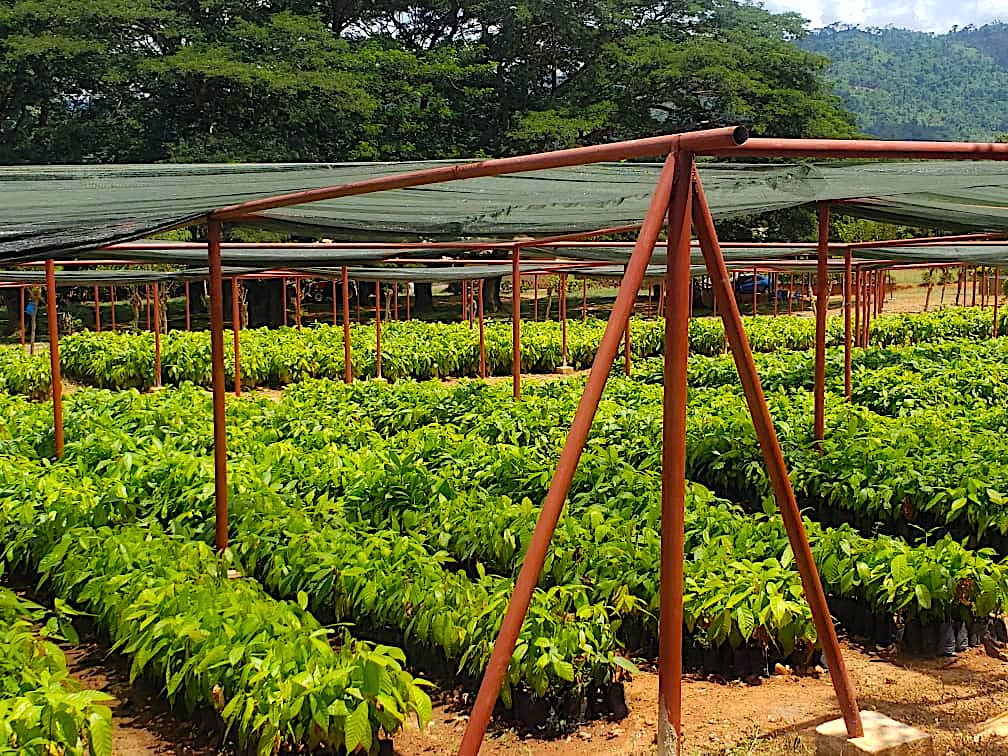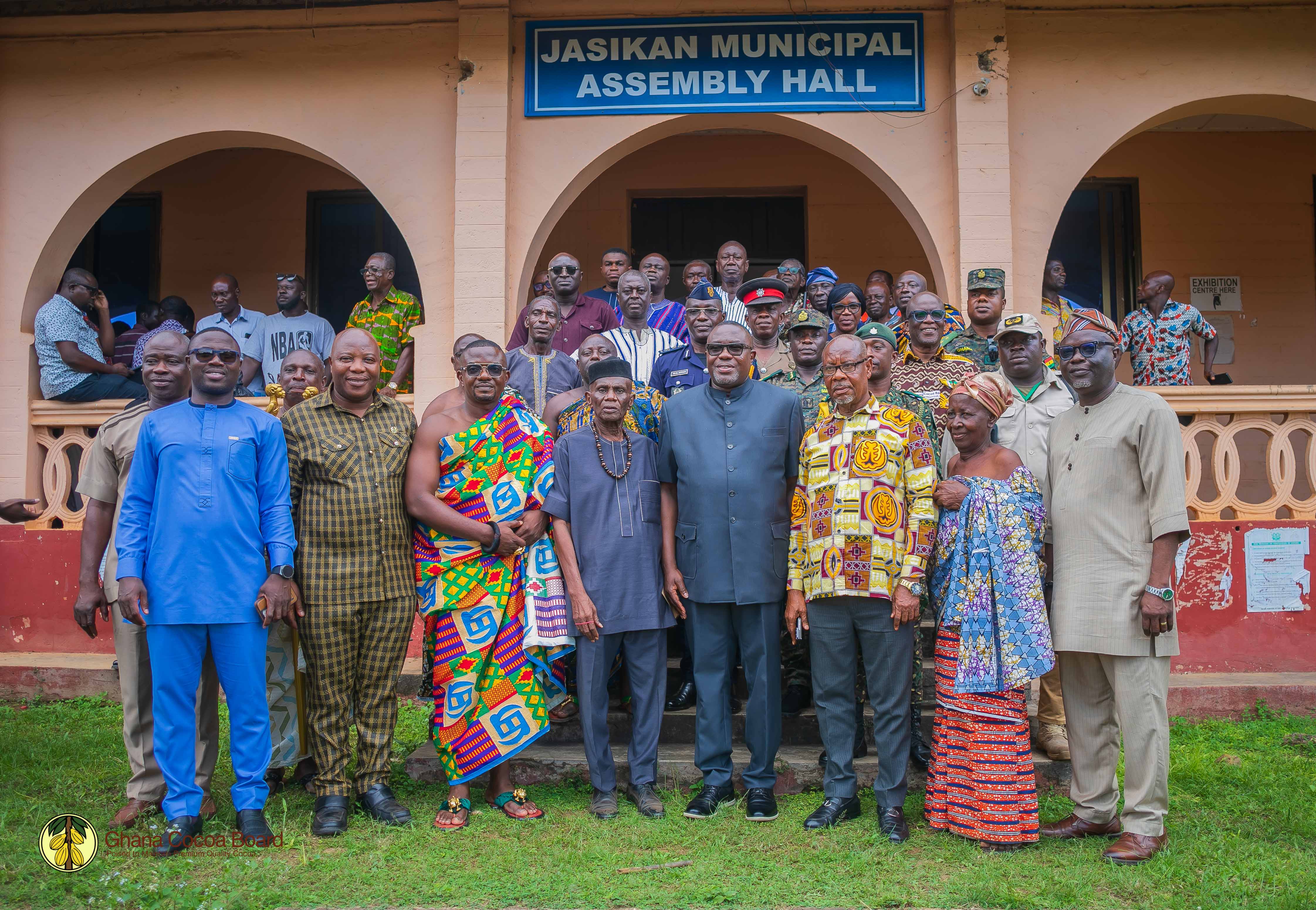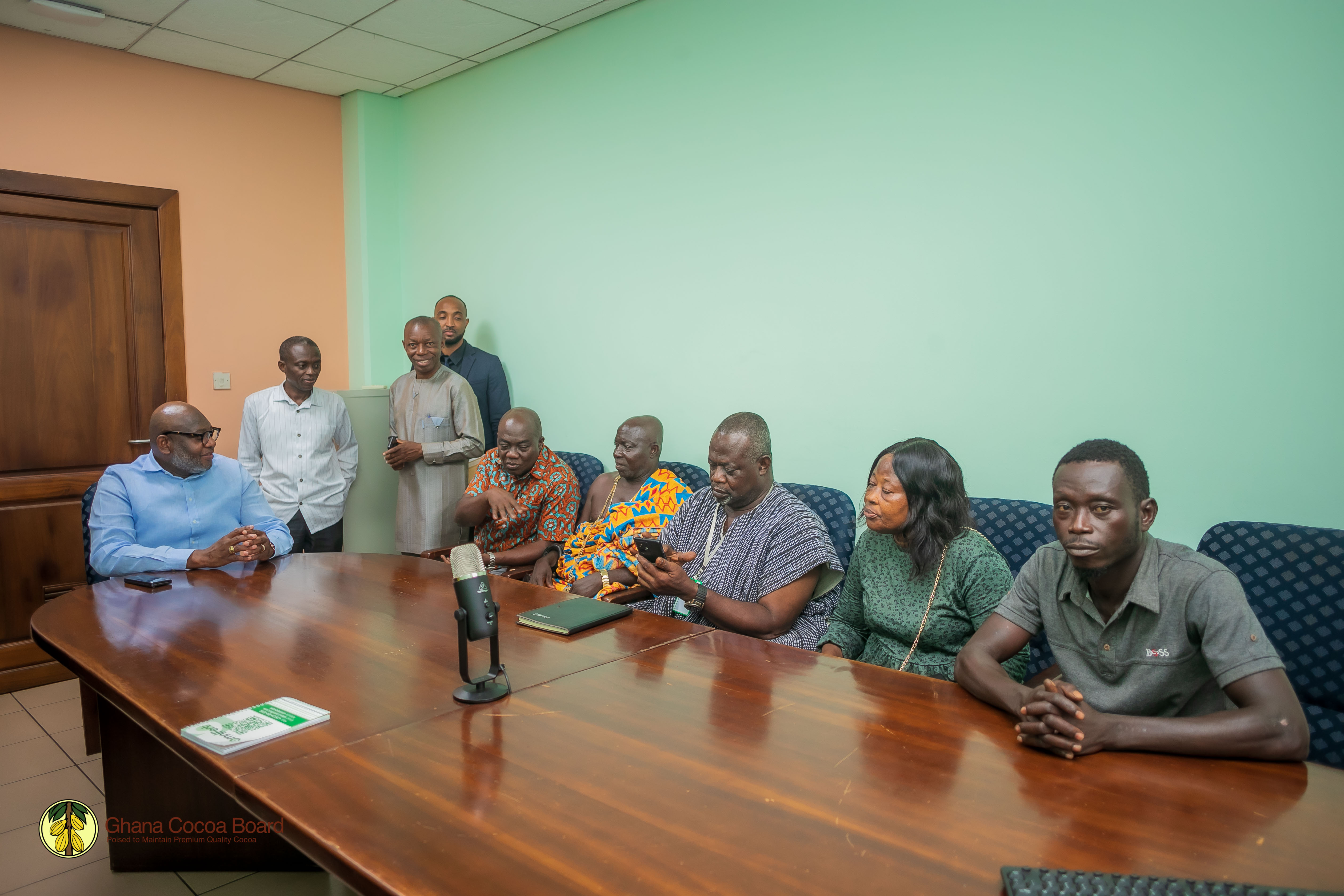COCOBOD GOES GREEN - ADOPTS NEW TECHNOLOGIES TO PROTECT THE ENVIRONMENT

Date: 03rd June 2021
Ghana Cocoa Board (COCOBOD) has adopted the use of cocopeat and receptacles as new technologies for raising cocoa seedlings at nursery sites. The initiative is part of the Board’s moves to streamline its core activities to align with best practices that protect and conserve the environment.
Cocopeat is 100% soilless organic medium produced from coconut husks with some trace elements which make it a good substitute for topsoil whereas the receptacles are plastic containers adopted to replace polybags often used in raising cocoa seedlings.
Speaking on when the new technologies would be rolled out, the Executive Director of the Seed Production Division (SPD) of COCOBOD, Rev. Dr. Emmanuel Ahia Clottey disclosed that 25 out of the 32 Seed Production Division Stations across the country had implemented the novelty for the 2020/21 crop year.
‘For a start, the division plans to raise 15% of the 92 million seedlings target for the 2020/21 crop year using the cocopeat and the receptacles. This will be increased incrementally to enable us identify challenges with the use of the technologies and address them accordingly because it is the best way to go’, he indicated.
Explaining the rationale for the new technologies, Rev. Ahia Clottey said polybags, which are usually used for raising cocoa seedlings are not biodegradable and can, in the long run, reduce the quality of the eco-system. He added that the use of the receptacles in seedlings production will ensure environmental sustainability because they are re-usable and also cost effective. Rev. Clottey further indicated that over-reliance on topsoil can result in sand winning and cause considerable harm to the environment and life, hence the need to shift from the practice.
The old system of raising cocoa seedlings at nursery sites
Every year, SPD raises millions of cocoa seedlings for free distribution to farmers in the country. The process involves the use of polybags and topsoil normally obtained from places such as treated and abandoned old refuse dump sites. Although, there are always deliberate attempts by SPD to ensure that the polybags are properly dispose of after the seedlings had been transplanted, there are still some concerns on the environment because the bags are not easily decomposable. Again, collecting topsoil continuously is also not eco-friendly.
In most cases, the topsoil collected usually contains numerous debris like broken bottles, stones in addition to the presence of termites, bacteria, fungus and efforts at sieving and re-conditioning the medium physically and chemically before use are time consuming, laborious and expensive.
‘Bamboos and palm fronts are often cut and used to erect nursery structures over the nursed seeds during the process. In addition to the imminent destruction of plant species and animal habitats due to the practice, the nursery structures built usually last for just a year and require new structures to be erected every year and this is not cost effective at all,’ he bemoaned.
The need to innovate
Rev Emmanuel Ahia Clottey said modernization of the division’s activities is a prerequisite for transforming operations and achieving maximum impact. He hinted that all nursery sites at SPD’s stations and those established on lands owned by COCOBOD now have permanent structures constructed with treated wood, galvanized poles and shade nets.
‘We are unable to build such permanent structures at all places because some of the sites have not fully been acquired by COCOBD to enable us erect permanent shades which are durable and guarantee value for money,’ he noted.
Advantages of cocopeat and receptacles
The two media are not only ecologically friendly but also provide good condition for the proper growth of the seedlings. The cocopeat promotes high water retention; ensures good germination and fast seedling emergence. The receptacles on the other hand have holes underneath which ensure good drainage and guarantee intact healthy roots formation. Again, removing seedlings for transplanting is from receptacles is achieved with minimum disturbances to the young plant and these qualities are essential for high survival rate of seedlings.
Going forward
Rev. Ahia Clottey said his outfit and the Cocoa Research Institute of Ghana (CRIG) are working together to monitor the twin-technologies under certain parameters to gather adequate observations which will help to provide the necessary backstopping to improve efficiency.
‘Technology is obviously the way to go now given heightened and continuous concerns from environmentalists on the need to ensure biodiversity conservation in cocoa cultivation and for that matter agriculture,’ he concluded.
Other News / Articles you might be interested in.

COCOBOD BOARD CHAIR URGES STAKEHOLDERS TO SAFEGUARD COCOA AS A NATIONAL HERITAGE
The Chairman of the Board of Directors of the Ghana Cocoa Board (COCOBOD), ...
Read More
NO GALAMSEY ON OUR LAND — TUFUHENE OF JEMA VOWS
The Tufuhene of Jema in the Aowin District of the Western South Region, ...
Read More
TREE CROP GRANTS TO BOOST FARMER INCOMES AND JOBS ACROSS GHANA’S GROWING REGIONS
Farmers and agribusinesses in Ghana’s major tree crop–producing regions are set ...
Read More